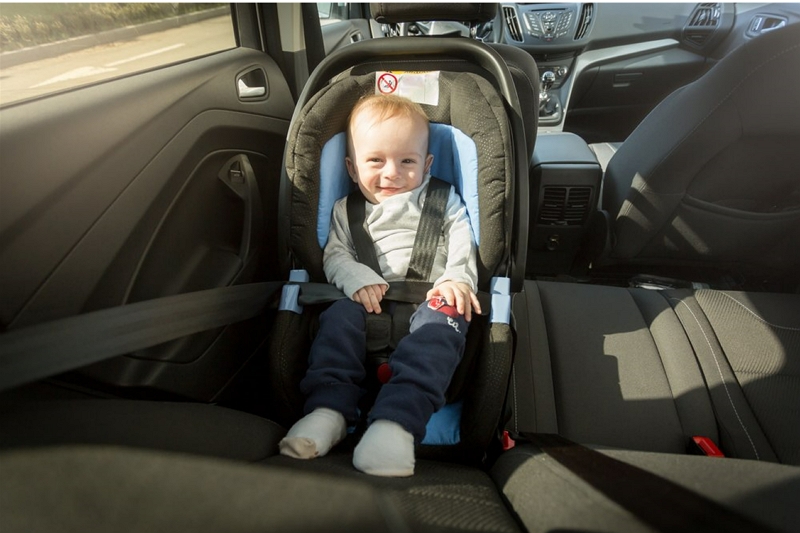When to switch babies car seats? Babies car seats are very important for any family or parents, but what happens when your little one outgrows them?
The safest option is to purchase a convertible car seat that can carry babies from birth until they need booster seats. However, not every model will fit the child correctly as he or she grows older.

So you must know when it’s time to switch baby car seats! Here are some guidelines on how long your infant should stay in their first car seat and milestones along the way:
– Babies usually remain rear-facing up to two years of age, then keeping them forward-facing up to four years old. It’s best if children continue using five-point harness systems until they weigh 40 pounds or more
– It’s best to keep children in a five-point harness car seat as long as possible. They provide the safest crash protection for young children, and although some manufacturers have begun making high back booster seats with this same level of safety, according to IIHS research, most parents do not use them correctly every time
– In fact , your child must remain restrained by a belt-positioning device – even if he weighs enough to no longer need a car seat – because these devices reduce injury during a crash better than just using a lap/shoulder belt alone
– The AAP recommends keeping kids safely rear-facing up to their second birthday unless they outgrow their convertible model first. After that, they should continue to ride in the back seat until age 12
– The American Academy of Pediatrics recommends keeping your child rear-facing as long as possible. That means up to at least their second birthday and/or when they outgrow the height or weight limit for their car seat.
What is the safest car seat on the market?
Finding the safest car seat on the market can be a difficult task. There are many different types of options and it is important to speak with an expert before making any purchase decisions.
Knowing how each type works, as well as what parents like best about their own can help guide you in your decision process. Here we will examine some things that every parent should consider when purchasing a new or replacement car seat for their child:
– Safety
– Comfort
– Ease of Use for Parents and Car Seat Technicians
– Size and Weight Capacity
What is the safest car seat 2021?
The American Academy of Pediatrics (AAP) recommends that children in a car or booster seat ride facing the rear for as long as possible. They should only sit in front-facing seats when they outgrow their child restraints, which is usually around age four and 40 pounds.
There are also other considerations to keep in mind such as how much room you have since larger kids need more space between them and the back of your front seat than smaller ones do so an older child might not be able to share a belt with a younger sibling.
The safest way forward will depend on both size and age, so take some time to research what works best for your family’s situation before making any decisions about transitioning into belts.
While it may feel like you are delaying the inevitable, your child’s safety is far more important than being able to see them in their rearview mirror. Please remember that car seats should always be used for children over 20 lbs and less than 40 inches tall. They should ride facing backwards until they have reached these milestones or exceeded them by at least one year of age.
The American Academy of Pediatrics recommends transitioning to a belt-positioning booster seat between ages four and eight when it becomes necessary due to size differences.
While some parents feel comfortable sharing belts with younger siblings if they are old enough, this can create issues during emergencies so it might not be worth taking the risk unless there are no other options available. It also helps to make sure older children are sitting at the back of the car so they can help younger ones buckle up.
Can my 1-year-old sit in a front-facing car seat?
Yes. Front-facing car seats are safe as long as your child is using a five-point harness and does not exceed the height or weight limit until they reach either of those milestones.
In some circumstances, it can be safer to keep them rear-facing if you have airbags in your front seat because their body will absorb more impact from those before hitting the hard surfaces than an adult would.
It’s important to note that this only applies if there are no other safety concerns with keeping him/her rear-facing (i.e., limited space).
If you decide on putting them forward-facing at one year old, make sure his/her legs fit properly between the edge of the vehicle seat and any part of the carseat, or that he/she can sit upright in the vehicle seat without slouching. This will allow for good head, neck and spine control while sitting in a five-point harness.
If your child exceeds these limits before their second birthday, it’s time to move them into an adult-size belt-positioning booster.
You’re one year old can use this until they are four feet nine inches tall (or 57 inches) which would be better suited with a high back booster because of head support issues if using only a no back option at this age.
There should not be any additional equipment needed other than the carseat you already have installed unless there was damage done on impact from accidents or some sort of event like fire where replacement parts may be needed.
Even if the equipment is damaged, it’s still safer to keep your child in their original carseat than using a different one that may have been compromised as well.
